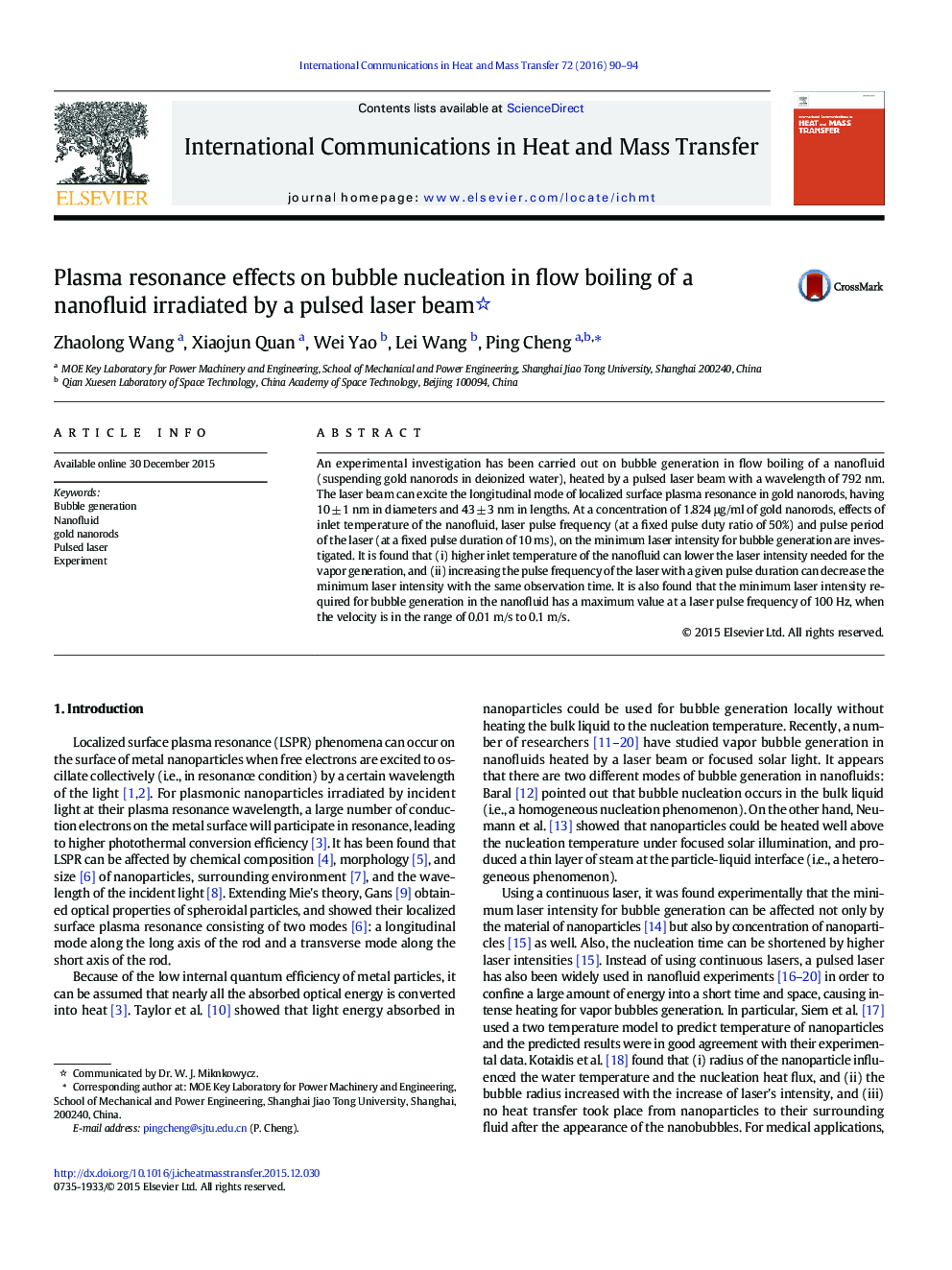| Article ID | Journal | Published Year | Pages | File Type |
|---|---|---|---|---|
| 652907 | International Communications in Heat and Mass Transfer | 2016 | 5 Pages |
An experimental investigation has been carried out on bubble generation in flow boiling of a nanofluid (suspending gold nanorods in deionized water), heated by a pulsed laser beam with a wavelength of 792 nm. The laser beam can excite the longitudinal mode of localized surface plasma resonance in gold nanorods, having 10 ± 1 nm in diameters and 43 ± 3 nm in lengths. At a concentration of 1.824 μg/ml of gold nanorods, effects of inlet temperature of the nanofluid, laser pulse frequency (at a fixed pulse duty ratio of 50%) and pulse period of the laser (at a fixed pulse duration of 10 ms), on the minimum laser intensity for bubble generation are investigated. It is found that (i) higher inlet temperature of the nanofluid can lower the laser intensity needed for the vapor generation, and (ii) increasing the pulse frequency of the laser with a given pulse duration can decrease the minimum laser intensity with the same observation time. It is also found that the minimum laser intensity required for bubble generation in the nanofluid has a maximum value at a laser pulse frequency of 100 Hz, when the velocity is in the range of 0.01 m/s to 0.1 m/s.
